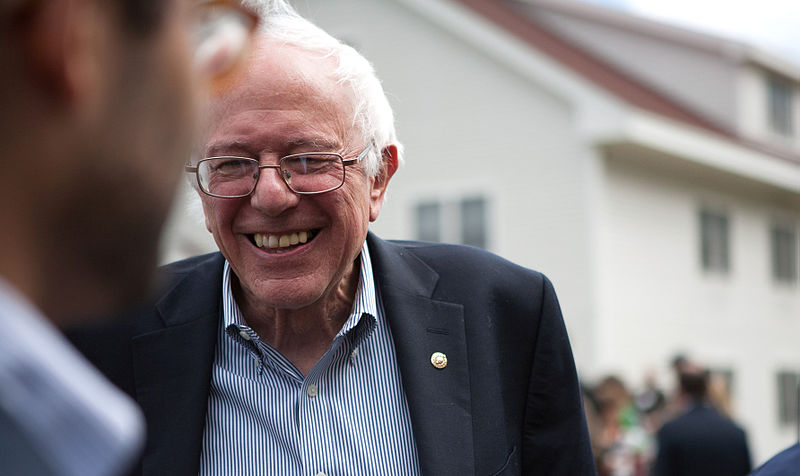[av_heading heading=’Politicians Cry Foul on Being Equally Represented in the Media’ tag=’h3′ style=’blockquote modern-quote’ size=” subheading_active=’subheading_below’ subheading_size=’15’ padding=’10’ color=” custom_font=”]
Written by: Matthew McGuire
[/av_heading]
Digital broadcast television and radio abides by rules and regulations set by the FCC and federal government. Within these regulations, there is indication on the time allotted for presidential candidates to appear on broadcast television.
These regulations do not include cable media outlets. The main focus is how ABC, NBC and CBS are covering different politicians in the upcoming election in 2016.
One major concern is the unnecessary broadcasting of the Trump campaign. He has the least amount of political background, continues to use slurs to get noticed, and the major digital broadcast news stations have been feeding into a dysfunctional cycle for personal gain.
Despite political factions, if the GOP or Democratic Party want to allow a large number of candidates to enter the race, then they need to be able to equally represent each candidate, so that the public can have a clear understanding of what issues and platforms the candidates stand behind.
Currently, the GOP Party has the following 13 candidates: Donald Trump, Ben Carson, Ted Cruz, Chris Christie, Mr. Rubio, Jeb Bush, Carly Fiorina, John Kasichand, Rand Paul, Lindsey Graham, Mike Huckabee, George E. Pataki and Rick Santorum.
The Democratic Party has 3 candidates including: Martin O’Mally, Bernie Sanders and Hillary Clinton.
With a smaller field for democrats, it has become more competitive to build exposure for campaigns. Variety reports on the “Bernie blackout” current dilemma in politics.
[av_icon_box position=’left’ boxed=” icon=’ue8c5′ font=’entypo-fontello’ title=’Election 2016 Poll Data’ link=’manually,http://www.nytimes.com/interactive/2016/us/elections/presidential-candidates-dashboard.html’ linktarget=’_blank’ linkelement=’both’ font_color=” custom_title=” custom_content=” color=” custom_bg=” custom_font=” custom_border=”]
Take a multidimensional look at the presidential race with The New York Times. They go over data measuring endorsements, fund-raising and polling for each candidate.
Scope out who is leading in Iowa, as well as on a national scale.
[/av_icon_box]
Below is a excerpt from The Communications Act of 1934 on the equal-time rule. It is our goal to provide each candidate with the same opportunity to display their methods and plans to being the next president.
Our outlet is a Web-based publication, and users may notice that we do not have to currently follow all of the rules and regulations that is setup for major digital and radio broadcast stations. We continue to provide a fair and balance look at politics to help inform an elective to vote for the best candidate possible.
Watch clips from the early debates from election 2016 on YouTube.
[av_icon_box position=’left’ boxed=” icon=’ue84b’ font=’entypo-fontello’ title=’The Communications Act of 1934 ‘ link=’manually,https://www.law.cornell.edu/uscode/text/47/315′ linktarget=’_blank’ linkelement=’both’ font_color=” custom_title=” custom_content=” color=” custom_bg=” custom_font=” custom_border=”]
(a)Equal opportunities requirement; censorship prohibition; allowance of station use; news appearances exception; public interest; public issues discussion opportunities If any licensee shall permit any person who is a legally qualified candidate for any public office to use a broadcasting station, he shall afford equal opportunities to all other such candidates for that office in the use of such broadcasting station:
(1)
bona fide newscast,
(2)
bona fide news interview,
(3)
bona fide news documentary (if the appearance of the candidate is incidental to the presentation of the subject or subjects covered by the news documentary), or
(4)
on-the-spot coverage of bona fide news events (including but not limited to political conventions and activities incidental thereto), shall not be deemed to be use of a broadcasting station within the meaning of this subsection. Nothing in the foregoing sentence shall be construed as relieving broadcasters, in connection with the presentation of newscasts, news interviews, news documentaries, and on-the-spot coverage of news events, from the obligation imposed upon them under this chapter to operate in the public interest and to afford reasonable opportunity for the discussion of conflicting views on issues of public importance.
[/av_icon_box]
Election 2016 | YouTube Playlist
[av_video src=’https://www.youtube.com/playlist?list=PLhLyUxyynCkm0XSmcbkk7yZ5j2uxv6mGP’ format=’16-9′ width=’16’ height=’9′]
Political News
[av_magazine link=’category,9′ items=’5′ offset=’0′ tabs=’aviaTBtabs’ thumbnails=’aviaTBthumbnails’ heading=” heading_link=’manually,http://’ heading_color=’theme-color’ heading_custom_color=’#ffffff’ first_big=’aviaTBfirst_big’ first_big_pos=’left’]




